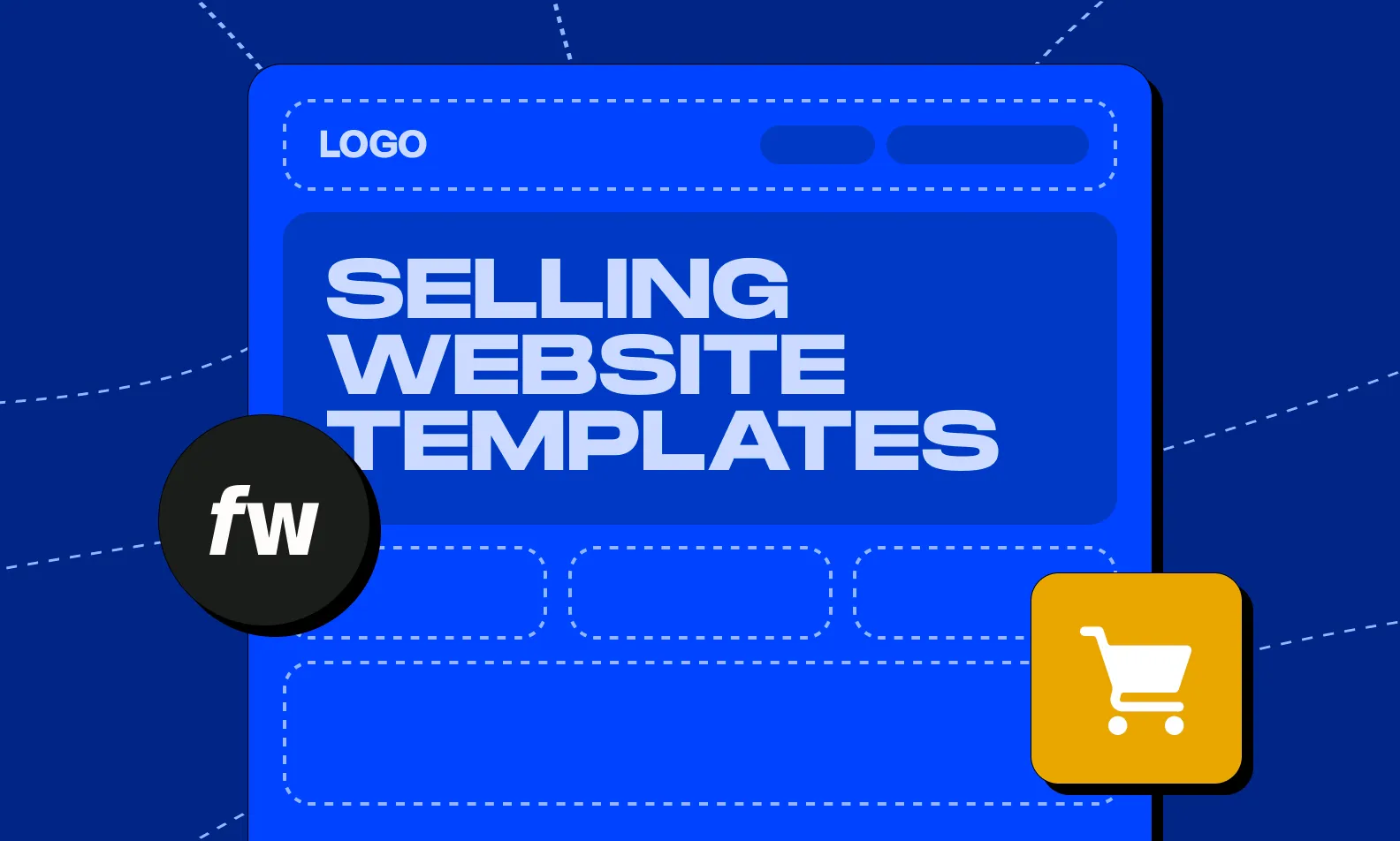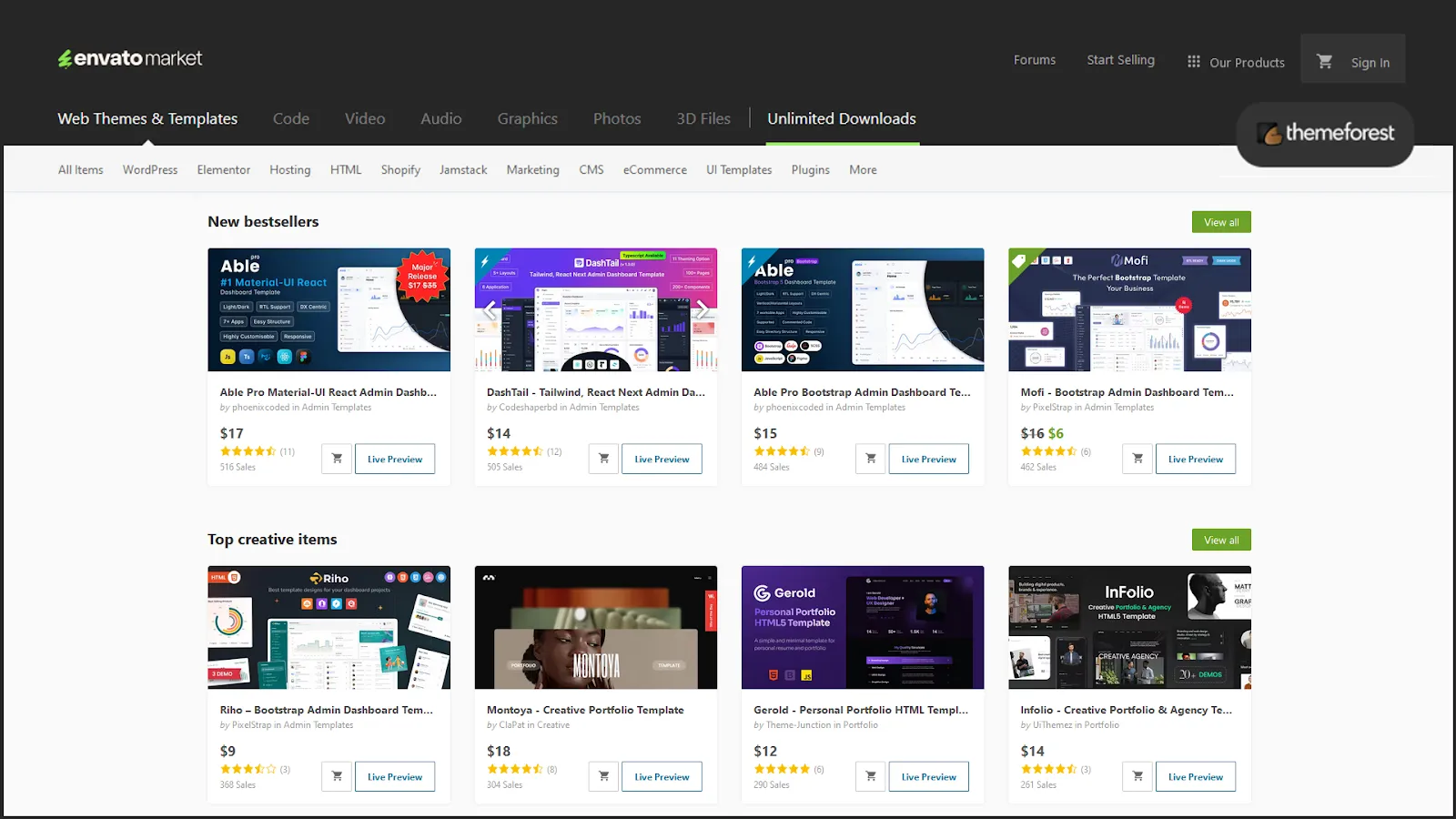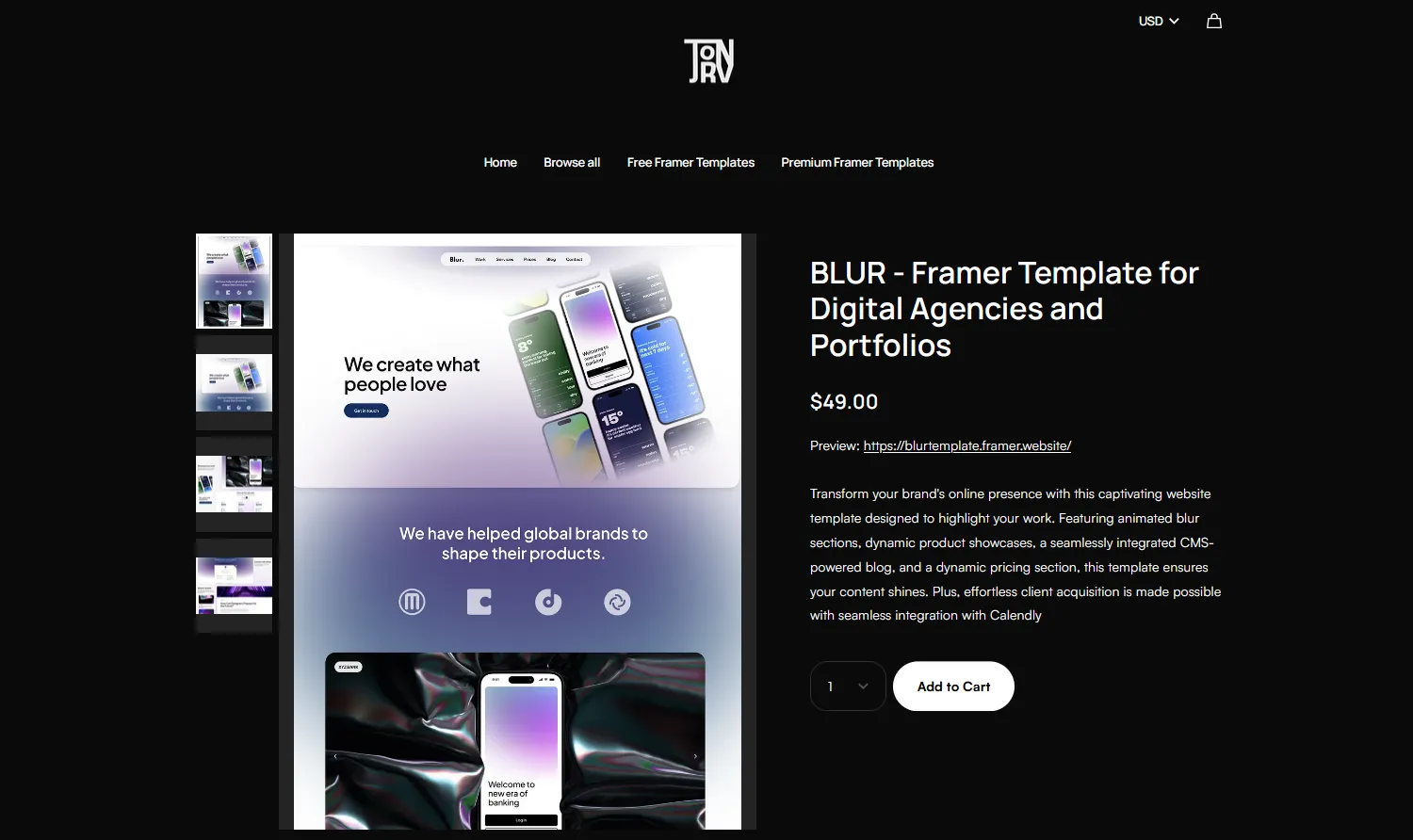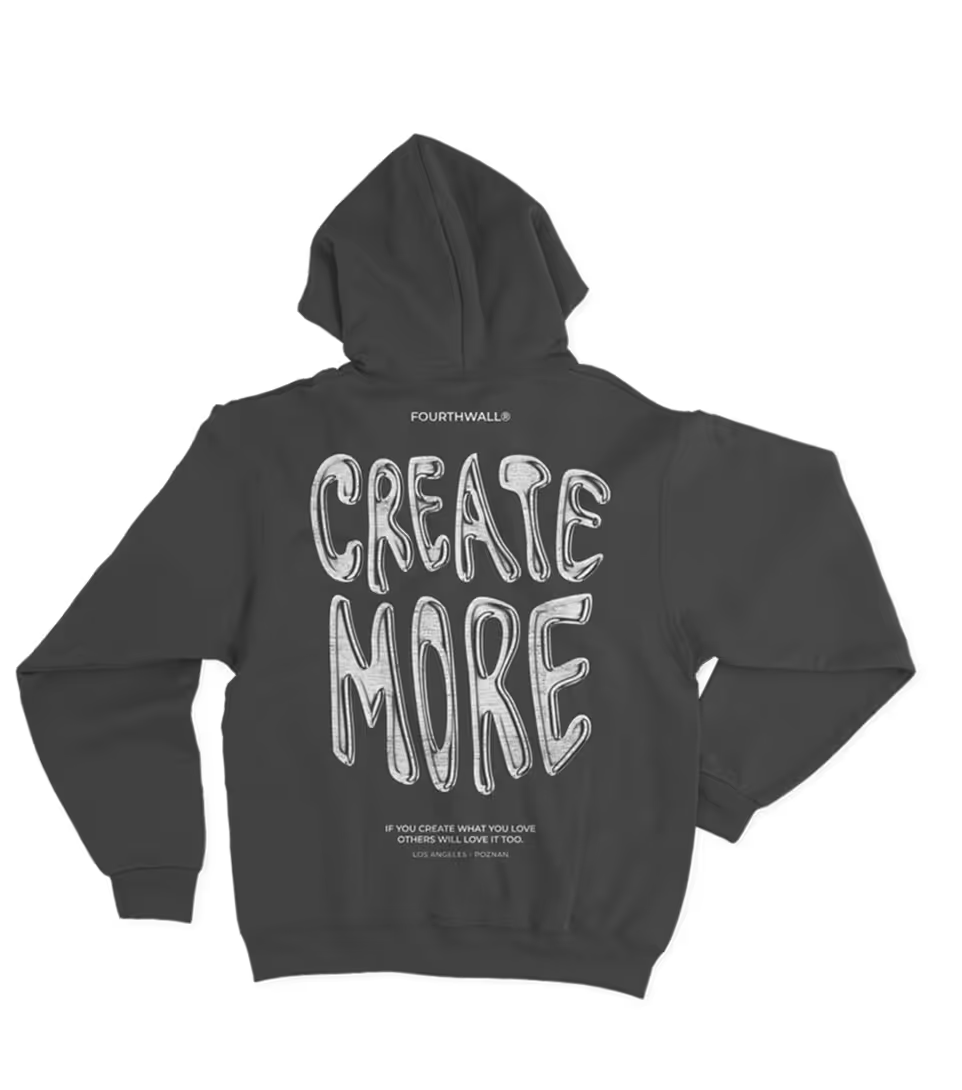How to Sell Website Templates Online (2025 Guide)

Whether for a content creator, freelancer, brand, or ecommerce shop, a solid online presence is one of the most important components of a business these days.
This is where website templates come in. These ready-made templates are perfect for quickly creating professional-looking websites, and they can be easily customized to suit any client’s needs.
If you’re a web designer, this is a golden opportunity for you to generate more revenue, as the demand for website templates is at an all-time high.
Website templates are low-overhead, scalable digital products that offer the potential for passive income and recurring income through updates, customizations, add-ons, and ongoing support.
If you’ve got website designing skills, you’re positioned perfectly for this opportunity!
Let’s learn about the key elements of creating website templates, the steps you need to take to create templates that sell, and strategies to market them, which you can even do through ecommerce headquarter sites like Fourthwall.
Who knew something as simple as selling website templates could be so lucrative?
Why Sell Website Templates?
The main reason is simple: they’re in demand, which means you can earn more revenue! The need for a standout online presence isn’t going away any time soon, so it’s a smart move for you to get into selling website templates now. Here are even more reasons to consider:
Everyone Needs Them!
With more people recognizing the importance of a professional online presence, everyone — from content creators and influencers to freelancers and businesses large and small —needs to stand out online.
Website templates—especially ones with customization options—are a great way to quickly create a custom website, and as the web designer, you stand to profit greatly.
Low Overhead Costs
Creating website templates that you can sell as digital products requires minimal upfront financial investment; it’s primarily a time investment.
This makes this gig attractive for web designers looking for new ways to monetize their skills without complicated project contracts and/or the financial overhead of creating physical products.
Scalability
This is where the passive income part comes in.
Once you've developed one website template, you can sell it over and over, multiple times, with little additional effort, meaning you’ll have created a passive income stream that allows you to profit from each template over time.
Creating and selling website template designs multiple times means multiple passive income streams!
Recurring Income
In addition to passive income, you can create further revenue opportunities by offering specialty options, such as customizing your website templates, updates, add-ons, and ongoing template support.
Customers who purchase your templates and decide on custom or extra features can increase your revenue even further.
Key Elements of a High-Quality Website Template
Creating website templates that sell requires a focus on quality, functionality, and creativity, so your clients’ websites can really stand out! Here are the key elements that make up a successful website template:
Responsive Design
Ensuring that your website templates are fully responsive means that they can work seamlessly and scale correctly across all devices, from PCs to tablets to smartphones.
Users expect a flawless experience regardless of their device, so taking the time to test your templates on a variety of devices puts you and your clients a step ahead.
User Friendly Interface
Not all of your clients will necessarily be tech-savvy, so the templates that you design should be easy to implement for most users; intuitive navigation and some simple customization options make a good base for most templates.
Past that, designers should create a user interface that allows customers to easily personalize their sites without needing extensive web design knowledge.
However, keep in mind that unless your focus is solely on passive income, more complicated customization needs aren’t the worst thing; they’re more opportunities for you to increase your revenue!
Customizable Features
Offer flexibility with various layout options, color schemes, and typography choices.
The more customization possibilities you provide, the broader your template’s appeal will be to different users looking for unique custom website solutions.
Having a strong catalog of website templates of different styles will definitely be to your benefit; you can even focus on some specific niches (you can research these to determine demand) to draw in customers with more individualized template needs.
SEO Optimization
Integrating SEO optimization best practices into your templates can help your customers’ sites rank higher on search engines.
Features like fast loading times and proper meta tags can significantly impact a site's search engine performance, making your template more attractive to potential clients.
Clean Code
Well-structured, error-free code and responsive design are essential for the performance and security of your website templates.
Designers should ensure that their templates are optimized for speed and stability, providing reliable foundations for their clients’ custom websites and giving them confidence in their design work.
Templates should also be updated regularly to keep up with any coding changes and also as a response to customer feedback.
5 Simple Steps to Create a Website Template That Sells
1. Research Your Target Market
Begin by identifying the needs of potential buyers.
Study successful templates on platforms like ThemeForest and Creative Market to understand what features are in demand, and look for niches or "holes" where you can fill a need.
Considering factors such as target audience and popular website design trends will help you create templates that can meet the needs of a wide range of customers, and researching how website templates are used can help you provide top-notch customer service.

2. Sketch Out Your Designs
Before jumping into development, sketch out your designs to plan the layout, structure, visuals, and user experience of each website template.
This is a crucial step in the web design process, allowing you to envision how the template will look and function.
Refining your ideas before moving on to the coding phase can save you time in the long run, and can open you up to additional approaches or niches you could design for.
3. Develop Your Templates
Depending on your skill level, you can either code the website template from scratch, or use a dag-and-drop website builder.
Focus on creating and selling website templates that are clean, efficient, and user-friendly, and make sure your templates are fully responsive and compatible with all major web browsers.
4. Template Testing
Testing is essential to ensure your template performs well across different platforms and that it can be used by the different skill sets of your various customers.
Make sure you check on a range of browsers to ensure browser compatibility, optimize load times, and fix any bugs.
The goal here is to provide a seamless user experience that will make your website template stand out in a crowded market.
5. Licensing and Packaging
Once your template is ready, it’s time to package it for sale!
This includes bundling all necessary files, such as HTML, CSS, and JavaScript, plus the required assets and any extras you want to include.
Decide on a licensing model (single use or multi use), and include clear instructions for your buyers.
Platforms like TemplateMonster or ThemeForest can help you reach a wider audience of potential buyers, or you can headquarter your template design shop on a great ecommerce platform like Fourthwall, where you can easily host your digital files and promote them for sale in your own shop.
Strategies for Selling Website Templates
Check out these smart ways to get your website templates noticed and sold!
Create a Pro Portfolio
Having a professional portfolio website means you’ve got both a great place to display your design work, and a sales platform.
This is where you’ll display your best website templates, offer extras on customization services, and sell directly to your customers.
Ecommerce sites like Fourthwall are perfect for this, as you can sell digital products right alongside any print-on-demand or physical products you’d also like to include; you could even set up memberships if you want to offer ongoing bonuses or early product announcements to your clients.
Max Your Social Media
Using social media platforms like Instagram, Pinterest, LinkedIn, and even TikTok to show off your design work can be such a good way to attract buyers to your templates!
You can share new design previews and show your products in action through screenshots and customer testimonials; you can also offer special promotions to generate interest in your custom website products.
Collaborating with influencers, especially bloggers, can help get your templates in front of more eyes!
Join Marketplaces
While having your own headquarters on an all-in-one ecommerce site like Fourthwall gives you the most control over your design work and how you present it, adding your website templates to sites like ThemeForest and Creative Market can help you get even more customers.
These marketplaces can offer high visibility, but keep in mind that they also come with competition and commission fees. Take some time to evaluate the pros and cons to determine if these platforms align with your brand and goals.
Offer Promo Deals
Who doesn’t like a deal?
Running special discounts, introductory offers, or limited-time offers can help boost initial sales and attract new clients!
Consider offering bundle deals or early-bird pricing to create a sense of urgency and encourage new customers to try your work.
Start Selling Your Website Templates with Fourthwall
Your website templates have been created, your socials are on point, and you’ve got a whole slate of promo ideas ready to go - now you need a base of operations for it all! Fourthwall is just the place - their ecommerce platform works perfectly for creators and designers to sell digital products, including website templates, directly to their audiences.

Fourthwall offers features like your own customizable storefront, integrated payment processing, and extra features like memberships, video thank you notes, and your own line of custom merch that you can brand with your website design logo.
Fourthwall simplifies the whole process of listing and selling, with a whole host of tools and support, so you can get started selling and turn your website template design skills into a profitable venture. Take those templates to Fourthwall today!
Frequently Asked Questions
Can I make money selling website templates?
Yes, you can make money selling website templates, especially if you create high-quality, customizable templates for platforms like WordPress, Squarespace, or general HTML-based layouts.
By selling your templates on popular marketplaces or through your own portfolio, you can reach a wide audience of website designers and business owners looking for pre-made designs.
Providing well-documented tutorials on how to customize your templates can also attract more customers, as people appreciate easy-to-follow instructions for modifying web templates to fit their custom brands.
How do I sell my website layout?
To sell your website layout, you should first create high-quality, responsive designs that are compatible with platforms like WordPress, Squarespace, or other web templates.
You can list your layouts on various marketplaces, such as ThemeForest, or sell directly through your own website or portfolio.
Providing demos and offering detailed tutorials on how to customize your layouts will increase the likelihood of attracting buyers, especially if you target custom brands looking for unique and professional website design options.
How do I create and sell HTML templates?
Creating and selling HTML templates involves designing clean, customizable layouts that are easy for users to adapt to their needs.
Start by focusing on creating well-structured HTML code that works seamlessly across different devices and browsers.
Once you've created your template, you can sell it through online marketplaces or by listing it on your own website portfolio.
Offering customization options and including tutorials will help buyers modify the template for their own website design needs, which can boost your sales in the long run.
















